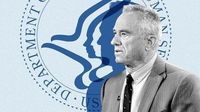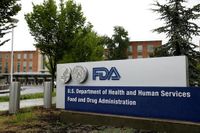On August 27, 2025, the U.S. government took a decisive turn in its COVID-19 vaccination policy, unveiling a new set of restrictions that are already raising questions and concerns across the country. The Food and Drug Administration (FDA) approved updated COVID-19 vaccines for the 2025-26 season, but access is now sharply limited compared to previous years. This move followed an announcement from Health and Human Services (HHS) Secretary Robert F. Kennedy Jr., who declared the rescinding of Emergency Use Authorization (EUA) for the Pfizer and Moderna mRNA vaccines, narrowing the pool of Americans eligible for easy access to the shots.
The new rules mean that only seniors aged 65 and older, as well as younger adults and children with at least one high-risk health condition, can receive the vaccines without jumping through extra hoops. For everyone else—including healthy adults and children—the path to vaccination now requires a consultation with a healthcare provider, and, in some cases, a prescription. As Kennedy put it in his announcement on X (formerly Twitter), "The American people demanded science, safety, and common sense. This framework delivers all three."
But what does this really mean for the average American hoping to stay protected against COVID-19 this fall and winter? According to reporting from Axios, the FDA’s updated approval rewrites pandemic-era rules, making access to the shots more complicated for many. Kennedy’s policy narrows the groups who can get COVID-19 vaccines without a prescription, and leaves healthy children under age 5 outside the scope of the new recommendations entirely—though doctors can still prescribe the vaccines off-label for these youngest patients.
The list of underlying conditions that qualify someone as high-risk is broad, encompassing asthma, heart conditions, depression, physical inactivity, and smoking, among others. But the new policy’s complexity has already sparked debate within the medical community. The Infectious Diseases Society of America urged doctors to continue recommending vaccination "based on the best available science" and warned that the narrow authorization "puts millions of lives at risk."
For parents, the changes are especially confusing. Previously, Pfizer’s vaccine was available in smaller doses for children as young as six months, but that’s no longer the case. Now, Pfizer’s COVID-19 shots are not available for children under age 5. Moderna’s vaccine remains accessible for children six months and older, while Novavax is approved for those 12 and up. The American Academy of Pediatrics (AAP) has openly criticized the federal immunization policy, arguing it wasn’t created through a "credible process." On August 19, the AAP reaffirmed its recommendation that all children between six and 23 months receive the latest COVID-19 vaccine, and that all children ages 2 to 18 years should be offered the shot if not previously immunized.
Hospitals and health departments are urging families to consult with their pediatricians about what’s best for their children. Nationwide Children’s Hospital echoed this sentiment, stating, "As each child is unique, Nationwide Children’s recommends parents/guardians discuss the COVID vaccine with their pediatrician." Ohio’s Department of Health Director, Dr. Bruce Vanderhoff, expressed confidence in the vaccines’ safety and effectiveness, noting that vaccines have been "vital" in saving Ohioans and all Americans from serious illnesses suffered by previous generations. He also emphasized the importance of ongoing dialogue between the medical community and the public, especially in the face of rising anti-vaccine rhetoric.
The policy shift is part of what Axios describes as a "steady drip" of moves by Kennedy and the Biden administration to incrementally raise barriers to accessing COVID-19 shots. While the new framework aligns with expectations from drug companies, it’s also left many wondering what the future holds. The Centers for Disease Control and Prevention (CDC) and Kennedy’s handpicked vaccine advisory board are expected to weigh in on the suitability of the shots in the coming weeks, possibly adding further complexity. Dr. Vanderhoff said he would pay close attention to guidance from the Advisory Committee on Immunization Practices, which is set to meet in September, with the CDC likely to publish official recommendations soon after.
Insurance coverage is another looming question. The new policy could mean that some patients wind up paying out of pocket for vaccines that can cost around $140, according to Axios. It’s not yet clear how broadly insurers will cover the shots, and experts warn that insurance companies typically follow federal recommendations—meaning they may only pay for what is officially recommended. Kathryn Bakich, senior vice president at benefits consulting firm Segal, noted that employers don’t have to make immediate changes to workplace benefits and can’t stop paying for vaccines during the current plan year. However, health plans will be watching the administration for signs about whether their coverage obligations will be limited to high-risk groups in the future.
On the ground, pharmacies like CVS expect to receive shipments of the updated vaccines within days and plan to administer them where legally permitted. CVS spokesperson Amy Thibault told The Columbus Dispatch that the company will "administer FDA-authorized COVID-19 vaccines in states where legally permitted" at its pharmacies and MinuteClinics. Walgreens did not respond to requests for comment in time for publication. Meanwhile, Pfizer announced that this season’s vaccine shipment would begin immediately, with availability in pharmacies, hospitals, and clinics across the country.
The shift away from emergency use to traditional approval pathways is a significant change in how COVID-19 vaccines are marketed and distributed. An HHS Q&A document shared with USA Today clarified, "The transition is from a circumstance where vaccines have been marketed under both the emergency use pathway and the traditional approval pathway, to a circumstance where the COVID-19 vaccines are now marketed only under the traditional approval pathway. This is not a removal of COVID-19 vaccines from the market."
Despite fears and rumors that Kennedy was planning to ban the COVID-19 vaccine altogether, the White House dismissed such claims as "baseless speculation," according to fact-checking group Snopes. Still, experts warn that the new eligibility criteria could create more roadblocks for those not included, especially as questions remain about how vaccine providers will verify high-risk health conditions.
Raymond James analyst Chris Meekins predicted that the changes will likely result in fewer vaccinations, potentially leading to more COVID-19 cases. However, he noted that those most at risk of hospitalization should still have access to the shots. Looking ahead, there are open questions about whether vaccine makers will offer more incentives for pharmacies to administer the shots, and whether telehealth providers will step in to facilitate vaccine consultations for those now required to see a doctor first.
As the nation heads into another fall and winter with COVID-19 still circulating, the landscape for staying protected is more complicated than ever. With new rules, shifting recommendations, and ongoing debates within the medical community, Americans are left to navigate a vaccination system that’s no longer one-size-fits-all, but still aims—at least in its architects’ eyes—to balance science, safety, and common sense.


